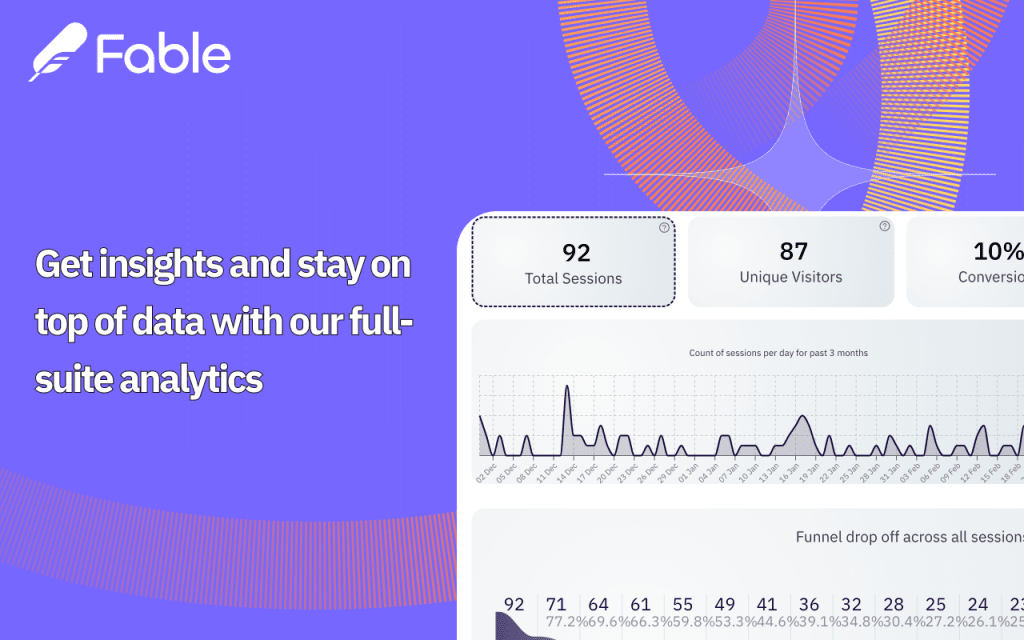Disruptive technology is reshaping industries, pushing boundaries, and transforming business models at an unprecedented pace. From AI and blockchain to 3D printing and renewable energy, disruptive innovations have become the catalyst for significant change across sectors. In my previous articles, “Innovation and Entrepreneurship: Fostering a Culture of Innovation in Your Organisation” and “From Idea to Market: A Step-by-Step Guide for Entrepreneurs,” we explored the importance of nurturing innovation and bringing ideas to life. Now, it’s time to focus on a critical element of modern business—how disruptive technologies are revolutionising the way we operate.
Disclosure: If you click on my affiliate/advertiser’s links, I am going to receive a tiny commission. AND… Most of the time, you will receive an offer of some kind. It’ s a Win/Win!
In this article “Disruptive Technologies and Their Impact on Business Models,” I want to take you on a deep dive into how these game-changing innovations are not just influencing business strategies but reshaping entire industries. If you’ve been following the rise of technologies like artificial intelligence, machine learning, and automation, you already know that the pace of change is staggering. However, understanding their impact on traditional business models is key to staying competitive and future-proofing your business.
The beauty of disruptive innovation is that it doesn’t just challenge the status quo—it creates opportunities. As entrepreneurs, we are in a unique position to leverage these technologies to build more agile, responsive, and sustainable businesses. But it requires understanding how these innovations can fundamentally alter market dynamics and customer expectations. I’ve seen first-hand how businesses that embrace disruptive technologies not only survive but thrive, whereas those that resist change quickly fall behind.
We’ll explore how technologies like blockchain are transforming industries by decentralising processes and enhancing security, or how AI is revolutionising decision-making with data-driven insights. These are not far-off trends; they are here and now, and their impact on business models is profound. More importantly, I’ll show you how to harness the power of disruptive innovation to gain a competitive edge, streamline operations, and even create new markets.
By the end of this guide, you’ll have a clearer understanding of how to integrate these technologies into your business strategy and how they can fundamentally reshape your business model for long-term success. Let’s explore the potential of disruptive technologies and what they mean for the future of entrepreneurship.
List of Topics
1. Understanding Disruptive Technology: What Sets It Apart?
• In this section, I’ll explain the key characteristics of disruptive technology and how it differs from sustaining innovation, with examples from various industries.
2. Disruptive Innovation: Transforming Traditional Business Models
• Here, I’ll discuss how disruptive innovation changes traditional business models, with real-world examples of companies that have successfully adopted these technologies.
3. The Role of Artificial Intelligence in Disrupting Business
• AI is one of the most impactful disruptive technologies. I’ll look into how AI is transforming decision-making, automation, and customer experiences across industries.
4. Blockchain and Decentralisation: A New Business Paradigm
• Blockchain technology is decentralising industries, creating new opportunities for transparency and security. This section will explore its impact on finance, supply chains, and beyond.
5. The Gig Economy and the Impact of Digital Platforms
• Digital platforms like Uber and Airbnb are redefining business models in the gig economy. I’ll cover how this shift is reshaping industries and creating new opportunities for entrepreneurs.
6. 3D Printing: Revolutionising Manufacturing and Supply Chains
• 3D printing is transforming the manufacturing sector by enabling on-demand production. I’ll explore how this disruptive technology is changing supply chains and business models.
7. Renewable Energy: Disrupting the Energy Industry
• In this section, I’ll discuss how advancements in renewable energy are disrupting traditional energy models, leading to more sustainable business practices.
8. The Role of Big Data in Disruptive Innovation
• Big data is driving new insights and business strategies. I’ll explain how leveraging data analytics can help businesses innovate and stay ahead of the competition.
9. Preparing Your Business for Disruptive Change
• Here, I’ll provide actionable steps on how to adapt your business model to incorporate disruptive technologies and stay competitive in a rapidly evolving landscape.
10. The Future of Disruptive Innovation: What’s Next?
• In the final section, I’ll look ahead to emerging disruptive technologies and trends that could shape the future of entrepreneurship and business models.
11. Summary and Conclusion: Embracing Disruptive Innovation for Business Success
1. Understanding Disruptive Technology: What Sets It Apart?
Disruptive technology is a term that gets thrown around often, but truly understanding what sets it apart is crucial for any entrepreneur. Unlike sustaining innovations, which improve existing products or services, disruptive technologies completely reshape industries by introducing new, often simpler, cheaper, or more accessible alternatives. The impact of disruptive technology lies in its ability to transform business models, customer behaviours, and even entire markets. As entrepreneurs, it’s essential to recognise when a technology has the potential to disrupt an industry so we can adapt or even lead the change.
A classic example of disruptive technology is the rise of digital streaming platforms like Netflix, which fundamentally changed the entertainment industry. Traditional cable companies relied on customers paying for extensive channel packages, while Netflix offered an affordable, on-demand solution that resonated with modern audiences. This shift in technology not only disrupted how we consume content but also forced established players to change their business models to stay relevant.
Understanding disruptive technology is not just about staying ahead of trends; it’s about survival. Businesses that fail to acknowledge the power of disruptive innovation risk becoming obsolete. We’ve seen this happen with companies like Blockbuster, which didn’t adapt in time to the streaming revolution and ultimately went out of business. It’s a reminder of how crucial it is to stay flexible and be ready to pivot when disruptive technologies begin to change the landscape.
For entrepreneurs, recognising a disruptive technology early can be a game-changer. It offers an opportunity to innovate, capture new markets, and build future-proof business models. The key is staying informed, being open to change, and understanding how these technologies can either enhance or threaten your current business operations.
2. Disruptive Innovation: Transforming Traditional Business Models
Disruptive innovation has the power to completely transform traditional business models, forcing companies to rethink how they deliver value to their customers. In my experience, businesses that are willing to embrace this change and innovate alongside these technologies are the ones that thrive in the long term. Disruptive innovation often starts small, targeting niche markets that are overlooked by established companies, but as it gains traction, it can rapidly reshape entire industries.
Take the example of ride-sharing services like Uber and Lyft. These companies didn’t start by targeting traditional taxi companies directly; instead, they focused on providing a more convenient, technology-driven solution for everyday people who needed a ride. Their business model transformed the transportation industry by offering an on-demand, app-based service that traditional taxis couldn’t compete with. Now, ride-sharing has become the new norm, forcing the entire industry to adapt to this disruptive innovation.
For established businesses, disruptive innovation can be both a threat and an opportunity. The danger of getting it wrong lies in ignoring the impact of these innovations, assuming that your current business model is safe. Many companies have fallen into this trap, believing that their established position in the market protects them from change, only to be overtaken by more agile competitors leveraging disruptive technology.
To stay competitive, entrepreneurs and business leaders need to be proactive in recognising disruptive innovation early. It’s about constantly assessing your business model, identifying potential disruptors, and exploring how these innovations can be incorporated into your strategy. By doing so, you not only protect your business from becoming obsolete but also open up new avenues for growth.
3. The Role of Artificial Intelligence in Disrupting Business
Artificial Intelligence (AI) is one of the most powerful disruptive technologies of our time, and its impact on business models is immense. From automating processes to providing data-driven insights, AI is changing how businesses operate across industries. In my experience, AI is no longer just a tool for tech companies—it’s becoming a core part of business strategies for companies of all sizes, helping to streamline operations, enhance decision-making, and improve customer experiences.
One of the key ways AI is disrupting business is through automation. Tasks that once required human input—such as customer service, data analysis, and even content creation—are now being handled by AI-powered systems. For example, chatbots driven by AI have revolutionised customer service, allowing businesses to provide instant, 24/7 support at a fraction of the cost of traditional call centres. This not only improves efficiency but also enhances the customer experience by providing quick, accurate responses.
AI also plays a significant role in decision-making by analysing vast amounts of data to identify patterns, trends, and insights that would be impossible for humans to process manually. This data-driven approach allows businesses to make more informed decisions, whether it’s optimising supply chains, improving marketing campaigns, or predicting customer behaviour. I’ve seen businesses that adopt AI into their operations outperform their competitors by staying ahead of market trends and responding quickly to changes.
However, the danger of not embracing AI is becoming less competitive over time. Businesses that fail to integrate AI risk falling behind, as their competitors use it to innovate, reduce costs, and improve customer satisfaction. For entrepreneurs, now is the time to start exploring how AI can be leveraged in your business to drive innovation and maintain a competitive edge.
4. Blockchain and Decentralisation: A New Business Paradigm
Blockchain is another disruptive technology that is transforming industries by decentralising traditional systems and increasing transparency and security. As entrepreneurs, it’s important to understand how blockchain works and the potential it has to disrupt traditional business models. By removing the need for intermediaries, blockchain technology allows for more efficient and transparent processes, particularly in industries such as finance, supply chain management, and healthcare.
At its core, blockchain is a decentralised ledger that records transactions across a network of computers. This means that no single entity controls the data, which makes it highly secure and resistant to fraud. In the finance industry, blockchain is disrupting traditional banking by enabling peer-to-peer transactions without the need for banks or other intermediaries. Cryptocurrencies like Bitcoin and Ethereum are prime examples of how blockchain is reshaping financial markets.
In supply chain management, blockchain provides full transparency from production to delivery, allowing businesses to track every step of a product’s journey. This can be especially useful for industries like food and pharmaceuticals, where traceability is crucial for safety and compliance. By using blockchain, businesses can ensure that their products meet regulatory standards and build trust with consumers.
The biggest mistake businesses can make is dismissing blockchain as just another tech trend. I’ve seen companies overlook its potential, only to later realise how it could have improved their operations or provided a competitive advantage. Entrepreneurs should explore how blockchain could be integrated into their business model, whether it’s for improving transparency, reducing costs, or enhancing security. By embracing blockchain early, you position your business to take advantage of the next wave of digital transformation.

5. The Gig Economy and the Impact of Digital Platforms
The rise of the gig economy is one of the most profound examples of disruptive innovation, driven largely by digital platforms like Uber, Airbnb, and Fiverr. These platforms have revolutionised the way people work, shifting from traditional full-time employment to more flexible, on-demand opportunities. From my experience, this shift isn’t just about technology—it’s about how business models are evolving to cater to changing consumer preferences and workforce dynamics.
The gig economy offers businesses access to a flexible, scalable workforce without the long-term commitments of traditional employment. Digital platforms enable companies to quickly hire skilled workers for specific tasks, saving time and money while maintaining high-quality output. I’ve seen how this has opened up new opportunities for entrepreneurs and small businesses to compete with larger firms by leveraging talent from around the world. The flexibility of the gig economy means businesses can adjust their workforce to meet fluctuating demands.
However, while the gig economy brings plenty of advantages, there are challenges to be aware of. Over-reliance on gig workers can lead to inconsistent service quality, and businesses must carefully manage the balance between cost savings and maintaining brand standards. For entrepreneurs, ensuring that your business model incorporates clear guidelines for quality control and customer experience is crucial when working with gig workers.
Ignoring the gig economy’s potential impact could leave your business behind. Established companies that have embraced this shift, like Uber in transportation and Airbnb in hospitality, have been able to capture significant market share from traditional businesses. As more industries adopt this model, it’s essential for entrepreneurs to explore how digital platforms can disrupt and enhance their own operations, offering both new revenue streams and access to a broader talent pool.
Level-up your career with Udacity's popular School of Data Science6. 3D Printing: Revolutionising Manufacturing and Supply Chains
3D printing is a disruptive technology that’s completely transforming the manufacturing industry. It allows businesses to produce customised products on-demand, reducing the need for large-scale production runs and complex supply chains. In my opinion, the beauty of 3D printing lies in its flexibility—entrepreneurs and small businesses can now manufacture prototypes, bespoke items, or even full-scale products without the heavy investment traditionally required for manufacturing.
One of the key advantages of 3D printing is the ability to rapidly iterate designs. For example, product designers can create prototypes, test them, gather feedback, and make adjustments quickly and cost-effectively. This dramatically shortens the product development cycle, enabling businesses to bring innovations to market faster. I’ve seen businesses use 3D printing to disrupt industries such as healthcare, fashion, and automotive by offering personalised solutions that traditional manufacturing methods simply can’t match.
However, like any disruptive innovation, there are risks. If businesses fail to integrate 3D printing strategically, they could miss out on its full potential. For example, companies that continue to rely on outdated manufacturing processes may find themselves outcompeted by more agile firms that can produce high-quality products faster and at a lower cost. Entrepreneurs should explore how 3D printing can enhance their current operations, whether through rapid prototyping, customisation, or reducing inventory costs.
As 3D printing technology advances, it’s becoming more accessible and affordable, making it a game-changer for entrepreneurs looking to enter industries that traditionally had high barriers to entry. By leveraging this disruptive technology, businesses can scale more efficiently and offer products that are uniquely tailored to their customers’ needs.
7. Renewable Energy: Disrupting the Energy Industry
Renewable energy is not just a buzzword—it’s a disruptive technology that’s shaking up the energy industry and changing how businesses approach sustainability. Solar, wind, and other renewable energy sources are replacing traditional fossil fuels, offering cheaper, cleaner alternatives. For entrepreneurs, this shift represents both a challenge and an opportunity. As governments and consumers demand more environmentally friendly solutions, businesses that incorporate renewable energy into their models are better positioned for long-term success.
I’ve noticed how renewable energy technologies are driving innovation in industries such as transportation, manufacturing, and even real estate. Electric vehicles (EVs) powered by renewable energy are disrupting the automotive industry, while businesses in other sectors are integrating solar or wind power to reduce their carbon footprint and operational costs. For example, companies like Tesla are leading the way in both electric vehicles and renewable energy storage, showing how one disruptive innovation can drive transformation across multiple sectors.
However, the danger lies in failing to adapt. Businesses that don’t prioritise sustainability may face increasing pressure from consumers, investors, and regulators. In my view, companies that embrace renewable energy not only gain a competitive edge but also future-proof their operations in a world that’s rapidly moving toward cleaner alternatives. As renewable technologies become more affordable, they offer a way for businesses to cut costs, reduce environmental impact, and meet growing demand for sustainability.
Entrepreneurs should seriously consider how renewable energy can be integrated into their business models. Whether it’s through energy-efficient operations, partnerships with green suppliers, or offering eco-friendly products, aligning with this global trend is becoming a necessity rather than a choice. The businesses that succeed in the future will be those that lead the charge in sustainable innovation.
8. The Role of Big Data in Disruptive Innovation
Big data is another powerful force behind disruptive innovation, transforming how businesses operate and make decisions. The ability to collect, analyse, and act on large volumes of data gives businesses a significant competitive advantage. In my experience, big data isn’t just about numbers—it’s about understanding patterns, predicting trends, and making informed decisions that drive growth and innovation.
One of the most exciting applications of big data is in personalising customer experiences. Businesses can analyse customer behaviour and preferences to tailor their products, services, and marketing strategies in ways that were never possible before. I’ve seen companies like Amazon use big data to recommend products to customers, increasing engagement and driving sales. This level of personalisation not only enhances customer satisfaction but also builds loyalty and trust.
However, with the power of big data comes the responsibility to manage it effectively. The risks of misusing or mishandling data are significant, from privacy concerns to the potential for biased algorithms. Entrepreneurs must ensure they have the right systems in place to protect customer data and use it ethically. Failing to do so can lead to a loss of trust and legal consequences, which can severely damage a brand’s reputation.
For entrepreneurs, embracing big data can open up new opportunities for innovation and efficiency. Whether it’s improving product development, enhancing marketing efforts, or optimising supply chains, the insights gained from data analytics can lead to smarter decisions and more successful business strategies. The challenge is to stay ahead of the curve, continuously refining your approach to leverage the full potential of big data.
Mastering the Art of Project Management: Your Path to Excellence9. Preparing Your Business for Disruptive Change
As entrepreneurs, we must always be ready for disruptive change, whether it’s driven by new technologies, shifting consumer preferences, or evolving market conditions. Preparing your business for disruption means being proactive rather than reactive. In my experience, the businesses that survive and thrive through disruptive innovation are those that embrace change early and build flexible, adaptable business models that can evolve over time.
One of the key steps to preparing for disruptive change is fostering a culture of innovation within your organisation. Encourage your team to think creatively, experiment with new ideas, and stay informed about emerging trends. This mindset will help your business stay agile and responsive to new opportunities. In my earlier article, “Innovation and Entrepreneurship: Fostering a Culture of Innovation in Your Organisation,” I discussed how creating this culture can be a powerful way to drive long-term success.
Another critical aspect is continually assessing your current business model and identifying areas that could be disrupted. By conducting regular market analysis and keeping an eye on potential disruptors, you can anticipate changes before they happen and pivot accordingly. For example, if your industry is being transformed by AI or blockchain, consider how these technologies could enhance your current operations rather than waiting for your competitors to gain the upper hand.
The biggest mistake I’ve seen businesses make is resisting change. While it may be tempting to stick to what’s familiar, doing so in the face of disruptive innovation can leave your business vulnerable. By staying ahead of the curve, being open to new ideas, and embracing disruptive technologies, you can position your business to not only survive but thrive in an ever-evolving world of business.
10. The Future of Disruptive Innovation: What’s Next?
As we look ahead, it’s clear that disruptive innovation is not slowing down. Emerging technologies such as quantum computing, autonomous vehicles, and biotech are already on the horizon, and their impact on business models could be even more profound than what we’ve seen so far. For entrepreneurs, understanding the future of disruptive innovation is essential for staying competitive and continuing to innovate.
Quantum computing, for example, has the potential to revolutionise industries like finance, healthcare, and cybersecurity by solving complex problems that are beyond the reach of traditional computers. Similarly, autonomous vehicles could disrupt not only the transportation industry but also sectors like logistics, insurance, and real estate. As these technologies continue to evolve, they will create new business opportunities while rendering some current models obsolete.
While it’s impossible to predict exactly how these technologies will unfold, one thing is certain: the pace of change is accelerating! In my view, the most successful entrepreneurs will be those who stay informed, remain flexible, and are willing to experiment with new technologies. By continuously innovating and adapting to new trends, you can ensure that your business stays ahead of the curve.
The future of disruptive innovation is full of possibilities, and I encourage you to stay curious, keep learning, and explore how these emerging technologies could shape the future of your business. By embracing change and leveraging disruptive technologies, you’ll be better equipped to navigate the challenges and seize the opportunities that lie ahead.

11. Summary and Conclusion: Embracing Disruptive Innovation for Business Success
As we’ve explored in this article, disruptive technologies are reshaping industries, transforming traditional business models, and offering unprecedented opportunities for entrepreneurs who are willing to adapt. From artificial intelligence and blockchain to the gig economy and renewable energy, these innovations are not just trends—they’re the future of business. Understanding the impact of disruptive technology is key to staying competitive and building a business that thrives in an ever-changing landscape.
In my experience, embracing disruptive innovation means more than just adopting new technologies—it requires a mindset shift. It’s about being open to change, continually reassessing your business model, and always looking for ways to innovate. As we discussed, companies like Netflix, Uber, and Tesla have successfully leveraged disruptive technologies to transform their industries, showing us that businesses willing to adapt and evolve can achieve long-term success. For entrepreneurs, staying ahead of these technological shifts is not optional—it’s essential.
As business leaders, we must be proactive in preparing for disruption. Whether it’s exploring the potential of 3D printing to revolutionise your supply chain or using AI to drive data-driven decisions, integrating these technologies into your business strategy can give you a significant competitive edge. More importantly, it positions your business to not just survive but thrive in a market that is constantly evolving.
But with the power of disruption comes responsibility. We must remain mindful of how we use these technologies, ensuring that we are balancing innovation with ethical considerations, especially when it comes to data and privacy. The businesses that will succeed in this new era are those that not only embrace disruptive technologies but do so in a way that builds trust with customers and creates long-term value.
Now is the time to act! Start by assessing your current business model and identifying areas where disruptive innovation could drive efficiency, enhance customer experiences, or open up new markets. Stay informed about emerging technologies, foster a culture of innovation within your team, and be prepared to pivot when necessary. The pace of change is only accelerating, and the entrepreneurs who are ready to embrace this future will be the ones who lead the charge.
I encourage you to continue your journey of learning and growth. Keep coming back to this blog, where I’ll be sharing more insights on innovation, entrepreneurship, and leadership. Together, we can stay at the forefront of disruptive change, elevate our business acumen, and create businesses that are not only resilient but positioned for long-term success. Let’s continue exploring how we can innovate, adapt, and thrive in a world of constant disruption.
Stay tuned for the next article in this series, “How to Develop a Successful Minimum Viable Product (MVP),” where we’ll dive into the essential steps for turning your innovative ideas into a tangible product. I’ll guide you through creating an MVP that not only validates your concept but also sets the foundation for long-term success. Whether you’re just starting out or refining an existing product, this next piece will help you take actionable steps toward market-ready solutions. Don’t miss it!
- Turn AI Anxiety into Competitive Advantage: How to Future-Proof Your Workforce for the AI Revolution
- Unlock Profit: Calculate Customer Lifetime Value & Maximize Growth
- Creating a Customer Persona: A Step-by-Step Guide On How To Do It
- Unleashing the Power of Digital Signage: The Best Software to Transform Your Business
- How Businesses Can Use Freelance Platforms & Expert Networks to Scale Smarter






